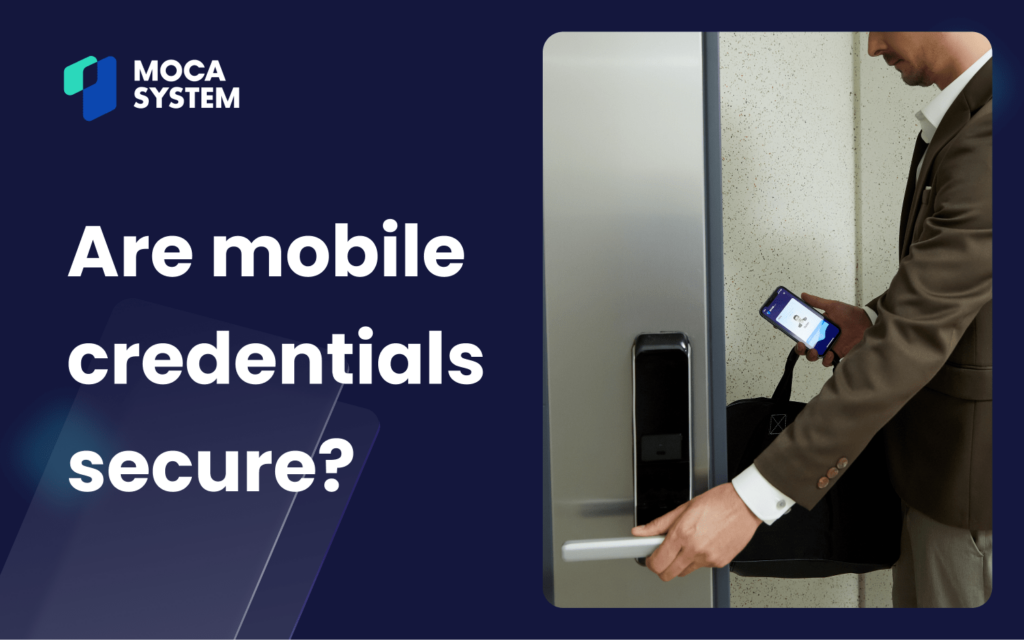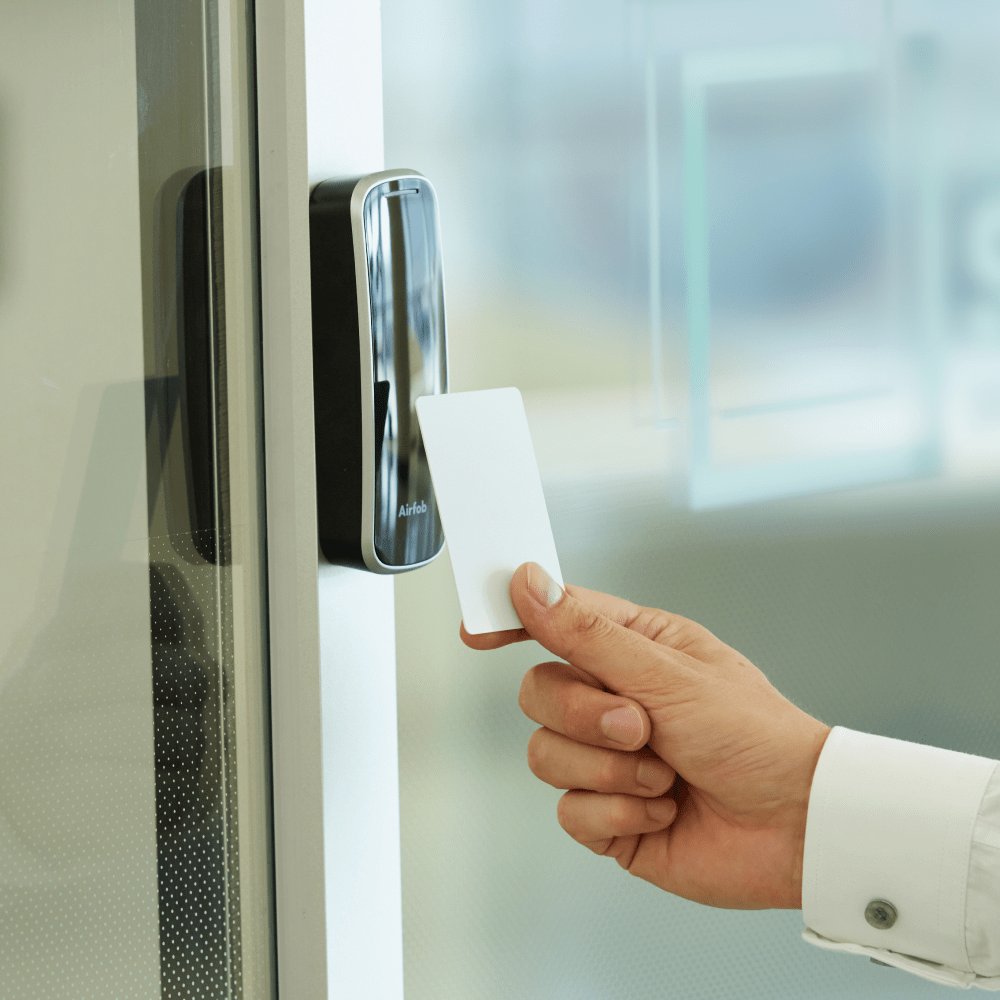Are mobile credentials secure?

The security challenges of RFID cards and PIN codes.
In the realm of access control, traditional methods like RFID cards and PIN codes have been the go-to solutions for many years. While they serve their purpose, these methods come with several inherent security challenges that can compromise the safety and efficiency of a workspace.
- Vulnerability to loss and theft: RFID cards, much like physical keys, are prone to being lost or stolen. Once an RFID card falls into the wrong hands, it can easily be used to gain unauthorized access to secure areas. Similarly, PIN codes can be shared, written down, or observed during entry, making them susceptible to unauthorized use.
- Lack of personalization: RFID cards and PIN codes lack the personalization that modern security demands. An RFID card can be used by anyone who possesses it, and a PIN code can be shared among multiple users. This makes it challenging to ensure that only authorized individuals are accessing secured spaces, leading to potential security breaches.
- Cloneability: One of the significant security risks associated with RFID cards is the ease with which they can be cloned. With inexpensive and readily available technology, an unauthorized person can duplicate an RFID card, gaining access to restricted areas without detection. This poses a serious threat to security, as it is difficult to track and manage cloned cards.
- Inconvenient management: Managing and distributing physical RFID cards can be cumbersome, especially for large organizations. Lost cards need to be deactivated and replaced, and new cards need to be issued to new employees. This process is not only time-consuming but also increases administrative overhead and costs.
- Static security: PIN codes provide a static form of security that does not adapt to changing conditions. Once a PIN code is compromised, anyone with knowledge of the code can gain access. Unlike dynamic security measures, PIN codes do not offer the flexibility to quickly respond to potential security threats.
- Lack of real-time control: Traditional access control methods often lack real-time control and monitoring capabilities. Administrators cannot instantly update or revoke access rights, leaving gaps in security during transitions. This lag in response can be critical in situations where immediate action is required to maintain security.
The benefits of mobile credentials.
Mobile credentials offer inherent security advantages compared to traditional access methods such as physical keys or PIN codes. You can use the following points as a guide when comparing mobile credential technologies to ensure they balance your unique needs for security and convenience.
- Reduced risk of loss: Unlike traditional physical credentials such as keys or access cards, which can be easily lost, stolen, or misplaced, people typically carry mobile phones with them at all times. This reduces the likelihood of mobile credentials falling into the wrong hands and enhances overall security.
- Biometric security: Mobile credentials often utilize biometric authentication methods, such as fingerprint or facial recognition, to verify a person’s identity. These biometric features are unique to each individual, making it highly secure as it ensures that only the authorized person can access the credentials stored on the device.
- Device protection: Smartphones, where mobile credentials are stored, come equipped with robust security features to safeguard sensitive information. These include encryption techniques that encode data, secure storage mechanisms that prevent unauthorized access to stored credentials, and secure boot processes that ensure the integrity of the device’s operating system.
- Remote control: In the event of a lost or stolen phone, mobile credentials offer the capability to remotely deactivate or delete access rights associated with the device. This remote control feature provides peace of mind to users and administrators, as they can prevent unauthorized access to secured areas even if the physical device is compromised.
- Double security: Many mobile credential systems employ two-factor authentication (2FA) or multi-factor authentication (MFA) methods. In addition to using the mobile device itself as a form of authentication, users may be required to enter a PIN code or scan their fingerprint, adding an extra layer of security to access control.
- Strong encryption: Mobile credential data is typically encrypted using advanced encryption algorithms, making it extremely difficult for unauthorized parties to decipher or access the information without the correct decryption key. This ensures that even if the data is intercepted during transmission or storage, it remains secure and protected.
- Quick updates: Mobile credential systems offer the flexibility to quickly update or revoke access rights associated with a specific device. Administrators can remotely manage credentials, instantly adding or removing access privileges as needed, without requiring physical access to the device or the access control system.
- Detailed records: Mobile credential systems maintain detailed logs of access events, recording who accessed which areas and when. These logs provide valuable insights for security administrators, enabling them to track and audit access activity, detect anomalies, and ensure compliance with security policies and regulations.
FREE EBOOK
Want to learn more about access control?

Download your
free eBook!
This eBook is not only for security experts. It’s also for business owners and anyone interested in the future of access control.

